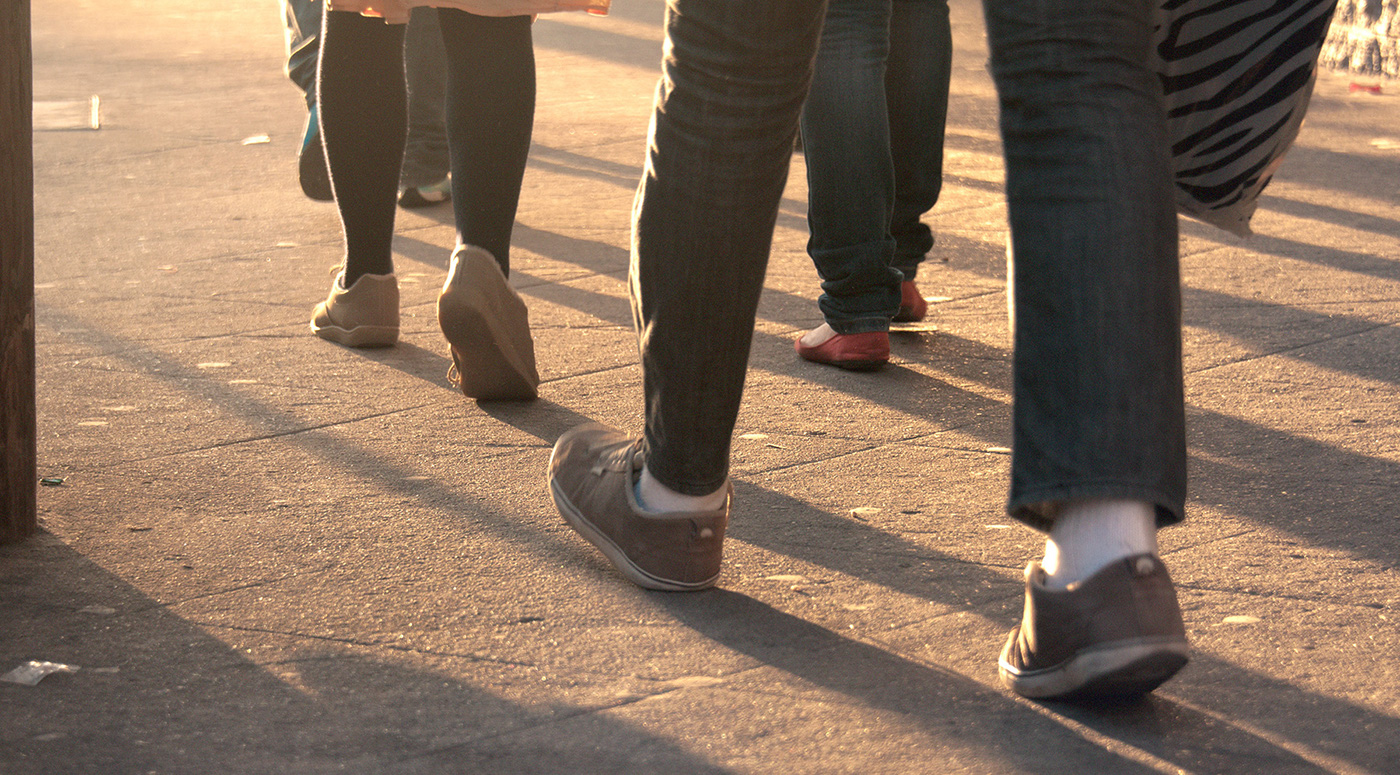
STREET KNOWLEDGE
It's the end of the work shift and although I could have brought my car with me, I decided not to. I prefer my daily dose of commuting social interaction.
On a daily basis I tend to end my day walking through downtown's busy areas taking in the street panorama through the romantic glow of the sunset. The streets take on a life of their own during the evening: people jump in and out of taxis, pick up last minute groceries, stores close down for the day, friends join up for drinks among many other things. I have seen this same story play out for over twelve years, ever since I first started commuting by myself.
Although I have walked these streets and taken public transport daily, I was accustomed to seeing my surroundings passively, without ever really knowing what to think of them. For me, they represented only a series of unorganized thoughts without any particular focus. But when I moved to a country with a different culture it sparked my imagination to pose many questions, making unavoidable comparisons between the two of them. Thus, I had received a new perspective, judging everything differently through a new lens, better appreciating how the particular histories, cultures and economics of a city can shape the lives of its citizens.
Through this photographic piece I represent the movement in the street, an overflow of information. This piece aims to manifest in a single image all the complexities and details that I perceive through my subjective observation of everyday life of a city I had become so accustomed to.
Ostensibly, through observing beyond these habitual normal experiences we can get to deeper sociological, economical & cultural insights in order to better understand the influence of institutional forces in defining specific characteristics and peculiarities of a city. I have realized how simple empirical observation is a primal tool for achieving first-hand anthropological information, information that is very much valuable. As many other visionaries before have done, to contribute to changes for future generations ahead we need to put ourselves to work and the more information we gather, the greater the impact we can generate.

SHOES
A friend of mine once told me that you could judge a person's personality simply by looking at their shoes. It was a thought that stuck with me and I see now that shoes are a very telling piece of garment, encompassing within its appearance an array of different personalities and styles. In short, shoes have the ability to mold themselves with the identity of the wearer and describe his or her uniqueness.
Through this I present a picture of shoes in motion. Shoes that represent non defined individuals by any social class or economic, religious or political prejudices. Living in Tijuana, Mexico means living with the marginalization of many social classes and their accompanying social stigmas. A place wherein higher middle class people tend to find it odd to commute walking or taking public transport, it is a city as many others that tend to separate its inhabitants by classes. Though this image I aim to present an ideal community interaction, the momentary harmony of social classes, an “utopia” wherein, no matter the social class or lifestyle, opportunities and quality of life are something for all individuals to eternally experience.

MINEGOLD
Through my everyday commuting I've come to compare the transport system of Tijuana to the ones I've seen in other cities. I explore this subject since it feels it hasn’t reached the stage that our society requires, since it has always proven to be a struggle commuting in Tijuana. So I went ahead and interviewed a couple of taxi/bus drivers from 3 different associations from the most transited routes in Tijuana to find key information that could lead me to an insight for the reason behind this outdated transportation. Through the answers I found that public transportation was in fact privately owned by enterprises, association and syndicates, left to self organize and regulate their business. Tijuana's most transited route has more than 1, 500 taxis that are owned by 3 different syndicates and also around 50 buses owned by a company.
As a consumer of this route service, the more apparent problem I've seen is how the taxi drivers go on “starving” looking for customers and always filling the streets with traffic. With the total of taxis that work without any regulation of their quantity working per shift, the competence brings a savage nature to taxi drivers, where they go on zealously hunting for customers instead of customers hunting for taxis. Another issue is the exploitation of the drivers by the owners of this taxi “mafia”. With a high price for the rental of taxis plus the price of gasoline, they are left to pickup at least 100 passengers to actually start gaining any money and with such competence in the route, it leaves them to work +12 hours on average to gain 300 pesos (equivalent to $25 USD) per day.
In this same route, the bus system does present an organized infrastructure with schedule trips, worthy salary's, and a limit quantity of 16 working per shift, but negatively, they only offers service till 8:00 pm and double the commuting time with consequence of traffic and vast amount of stops they make.
In conclusion, while ideally this should be the most organized route, the high degree of unregulated competence has evolved to an unhealthy transportation system that proves to be a wealthy business of exploiting as much taxi drivers as possible than rather serving the community with the quality service of transportation. And while the bus system offers a good alternative, it could still benefit from eliminating traffic from taxi's and having strictly defined bus stop locations.
The transport system is an imperative problem that needs solution, though the question remains: should there be further support for the bus transit system or should an entirely new proposal be drafted? Whichever the solution, regulating this route is a must. Moreover, although this will create massive layoffs it will, at the same time create worthwhile sustainable jobs. A new transport system is an opportunity for infrastructural inspiration, leaving room for the innovation of fresh ideas. A main route system should be basic to any city, as it will fix some of the traffic issues and further improve commerce in certain key areas. Some of the trends from other cities that could improve Tijuana's transport include constrained schedules, online maps, fixed bus stops as well as a stable a fare system. But to copy and paste this trends is not a guarantee for success, as any other city, Tijuana has its own issues worth considering to adapt this ideas efficiently to our specific structural needs.
Thanks for reading!





